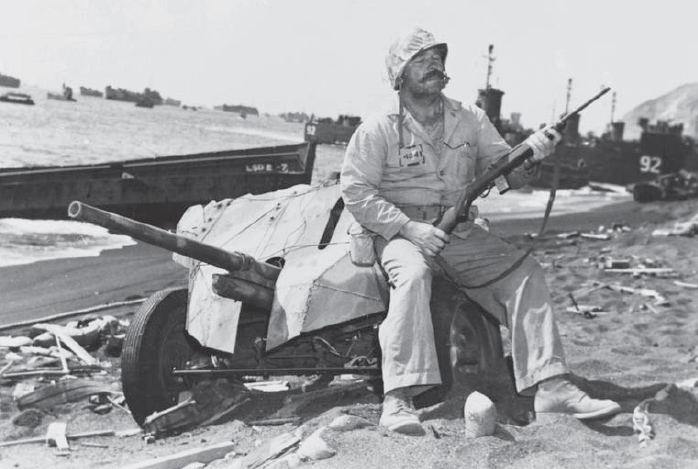
Against the Japanese defense force the Americans were to employ three Marine divisions, the 3rd, 4th, and 5th, totalling over 70,000 men, most of whom were seasoned veterans of earlier campaigns. Operation Detachment had already been postponed twice because of a shortage of support ships and landing craft due to the massive requirements of MacArthur’s Philippines invasion, and it had to be completed in time to release men and materials for the upcoming Okinawa invasion scheduled for April 1, 1945
As the plans came to fruition it was time to assemble the invasion force. The 3rd Division was still on Guam having taken the island in August 1944, while the 4th and 5th Divisions were to be deployed from the Hawaiian Islands. The Navy was scheduled to provide a massive “softening up” bombardment prior to the invasion and many of the fleet’s old battleships, the USS Arkansas, Texas, Nevada, Idaho, and Tennessee, too slow for the new Task Forces that were now prowling the Pacific, were ideal for the purpose.
On February 15 the invasion fleet left Saipan, first the LSTs carrying the first waves of troops from the 4th and 5th Divisions and the following day the troop transports with the remainder of the Marines and the plethora of tanks, supplies, artillery, and supporting units. The armada was soon spotted by Japanese naval patrol aircraft and the Iwo Jima garrison went on to immediate alert. General Kuribayashi had earlier issued his troops with a document called “The Courageous Battle Vows” which stated that each man should make it his duty to kill ten of the enemy before dying. With his defenses prepared and his men ready to fight to the death, Kuribayashi waited patiently for the approaching invader.
The Japanese High Command realized the importance of Iwo Jima and as early as March 1944, began to reinforce the island. The 145th Infantry Regiment of Colonel Masuo Ikeda, originally intended to bolster the garrison on Saipan, was diverted to the island and in the period leading up to the Marine attack in 1945 the 109th Division, including the 2nd Mixed Brigade (Major-General Senda), 26th Tank Regiment (Lieutenant-Colonel [Baron] Takeichi Nishi), 17th Mixed Infantry Regiment (Major Tamachi Fujiwara), Brigade Artillery (Colonel Chosaku Kaido), and additional antiaircraft, mortar, cannon, and machine-gun battalions were drafted to the island.
The naval units, mainly antiaircraft, communications, supply, and engineering groups, were under the command of Rear-Admiral Toshinosuke Ichimaru, who also had charge of the 27th Air Flotilla. At the time of the Marine landing – February 19, 1945 – the total Japanese garrison numbered 21,060, considerably more than the American calculation of 13,000.

On the beach a Marine in pensive mood sits with his M1 rifle. (National Archives)